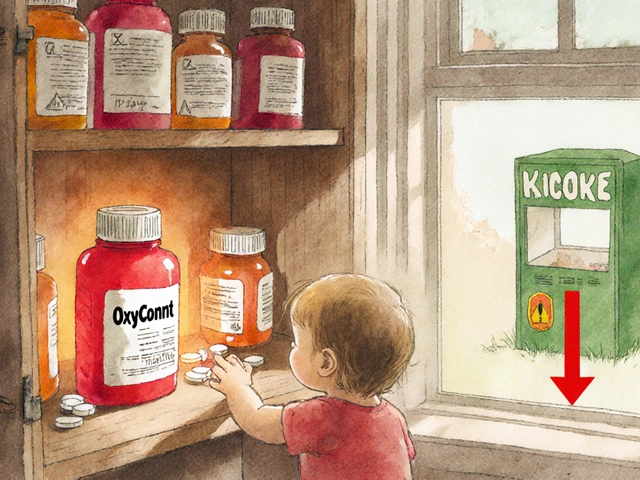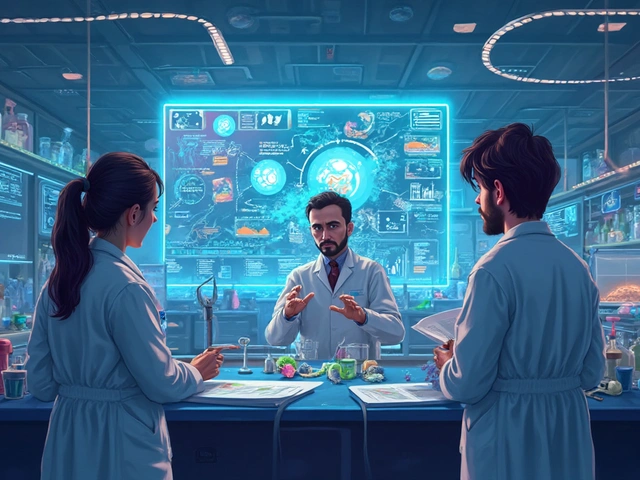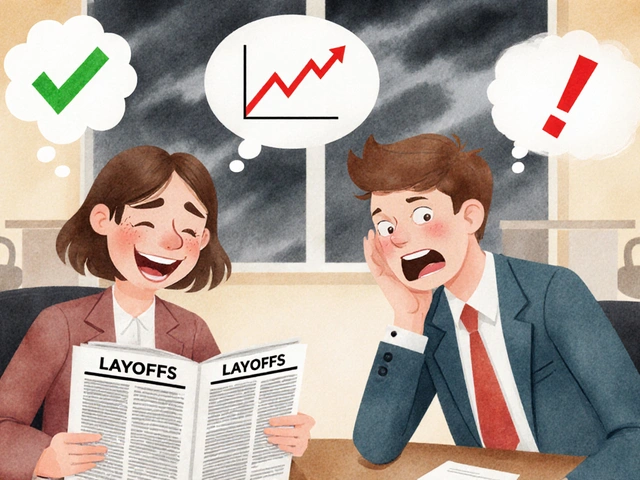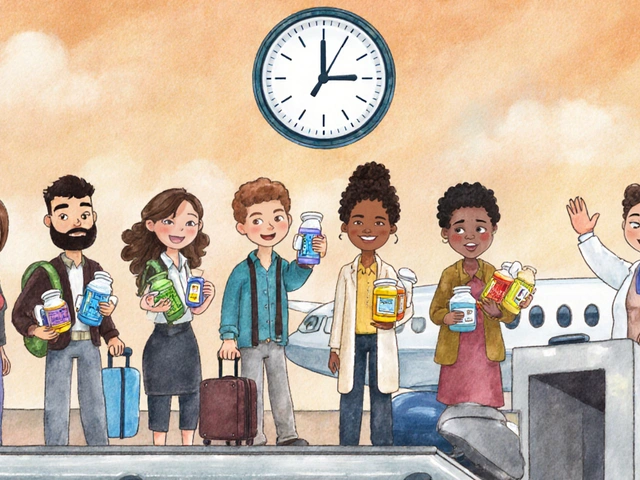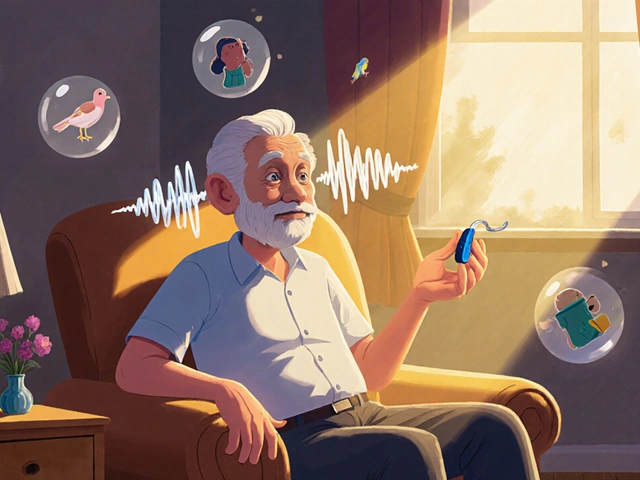22
How to Safely Dispose of Expired Medications: FDA Take-Back Guidelines and Best Practices

Medication Disposal Guide
Check Your Medication Disposal Method
Enter the name of your medication to see if it's on the FDA Flush List and get the safest disposal instructions.
Most people don’t think twice about tossing old pills in the trash or flushing them down the toilet. But that’s exactly what you shouldn’t do-unless you know the rules. Every year, millions of unused or expired medications end up in landfills, waterways, or medicine cabinets where kids, pets, or people struggling with addiction can find them. The U.S. Food and Drug Administration (FDA) has clear, science-backed guidelines to stop this. And the safest way? Take-back programs.
Why Safe Disposal Matters
It’s not just about cleaning out your medicine cabinet. In 2022, over 70,000 people in the U.S. died from drug overdoses. Nearly 13,500 of those involved prescription opioids that were left in homes. That’s not just a statistic-it’s a preventable tragedy. Expired antibiotics, painkillers, or anxiety meds sitting around are a risk. Kids might mistake them for candy. Teens might experiment. Someone in crisis might grab them out of desperation. And when these drugs leak into water systems, they harm fish, wildlife, and even drinking water supplies.
The FDA estimates that 15-20% of all prescription meds dispensed in the U.S. go unused. That’s over 5 billion pills a year. Most of them end up in the wrong place. Proper disposal isn’t optional-it’s a public health necessity.
The FDA’s Three-Step Disposal System
The FDA doesn’t give vague advice. They’ve built a clear, tiered system based on risk. Here’s how it works:
- Use a take-back location - Always the first choice.
- Use a mail-back envelope - If you can’t get to a drop-off site.
- Dispose at home - Only if the first two aren’t possible, and only for meds not on the Flush List.
There’s no fourth option. Flushing isn’t a default. It’s a last resort-for just 13 specific drugs.
Take-Back Locations: Your Best Option
Over 14,352 pharmacies across the U.S. now have secure take-back kiosks. Walmart, CVS, Walgreens, and many independent pharmacies all participate. These are not one-day events anymore. They’re permanent. You can drop off pills, patches, liquids, or even needles (in sealed containers) anytime during store hours.
The DEA runs these programs. They’re designed to prevent theft and diversion. In 2024, over a million pounds of medication were collected during National Take-Back Day alone. And that’s just one day. Permanent sites collect even more year-round.
Here’s how to find one near you:
- Visit DEA.gov/takeback and use the locator tool
- Call your local pharmacy and ask: “Do you have a drug take-back kiosk?”
- Check with your city or county health department
99.8% of meds collected through these programs are disposed of safely. That’s the highest compliance rate of any method. And it’s free.
Mail-Back Envelopes: A Convenient Alternative
Not everyone lives near a pharmacy with a drop-off box. Rural areas, elderly folks without cars, or people with mobility issues often turn to mail-back programs. These are pre-paid, FDA-compliant envelopes you order online or get from your pharmacy.
Companies like DisposeRx and Sharps Compliance provide these. You put your meds inside, seal the envelope, and drop it in any mailbox. The company handles the rest-incineration in licensed facilities, no exceptions.
Here’s what you need to know:
- Cost: $2.15 to $4.75 per envelope (some insurers or VA programs cover it)
- Approval: Must meet USPS Domestic Mail Manual Section 604.8.0
- Satisfaction: 94.2% of users report they’d use it again
Mail-back isn’t perfect-it costs money and takes a few days to arrive-but it’s far safer than tossing pills in the trash.

The FDA Flush List: Only 13 Drugs Qualify
This is where people get confused. You’ve probably heard “flush your meds” as general advice. That’s wrong. The FDA only allows flushing for 13 specific drugs-all of them high-risk opioids or sedatives.
As of October 2024, the Flush List includes:
- Fentanyl patches
- Oxycodone (OxyContin, Percocet)
- Hydrocodone (Vicodin)
- Buprenorphine (Suboxone)
- Meperidine
- Phenylephrine (in some combination products)
- Methadone
- Alprazolam (Xanax)
- Diazepam (Valium)
- Clonazepam (Klonopin)
- Tramadol
- Tapentadol
- Propoxyphene (no longer prescribed, but still in homes)
That’s it. No others. If your medication isn’t on this list, do not flush it. The EPA says flushing any other drug is illegal for households and carries heavy fines for healthcare facilities.
Why flush these 13? Because if someone finds them in the trash, they can die from a single dose. Fentanyl patches, for example, can kill a child just by skin contact. Flushing prevents that immediate danger. But it’s still not ideal for the environment. That’s why the FDA insists: take-back is better. Only flush if you can’t get to a drop-off location within 15 miles or 30 minutes.
Home Disposal: How to Do It Right (If You Must)
If you can’t reach a take-back site and your meds aren’t on the Flush List, you can dispose of them at home. But you have to do it correctly-or you’re still creating a hazard.
The FDA’s 5-step home disposal process:
- Remove personal info - Use a permanent marker or alcohol swab to completely black out your name, prescription number, and dosage on the bottle. Don’t just scribble-destroy it.
- Mix with unpalatable stuff - Use a 1:1 ratio. Coffee grounds work best (78% of users prefer them). Cat litter, dirt, or even used paper towels also work. The goal is to make it disgusting. No one will dig through wet coffee grounds to find pills.
- Seal it tight - Put the mixture in a plastic bag or container with a lid. The FDA recommends at least 0.5mm thickness. Ziplock bags are fine, but double-bag if you’re worried.
- Throw it in the trash - Not the recycling bin. Not the compost. The regular household trash.
- Recycle the empty bottle - Once it’s completely de-identified, you can recycle the plastic bottle. Remove the label first.
Common mistakes? People pour liquids straight into the trash. That’s a no-go. Liquids must be absorbed first-use kitty litter or paper towels. Others just toss the bottle without removing the label. That’s a privacy risk. And some flush non-Flush List meds because they “don’t want to smell them.” That’s dangerous and illegal.
What About Liquids, Creams, or Inhalers?
Liquids, gels, and inhalers need special handling.
- Liquids - Mix with coffee grounds or cat litter in a sealed container before tossing.
- Creams and ointments - Squeeze them into a sealable bag with absorbent material. Don’t rinse tubes-just cap and trash.
- Inhalers - Do NOT puncture or incinerate. These can explode. Check with your pharmacy-they often have special disposal bins for inhalers.
- Needles and sharps - Use a sharps container (available at pharmacies) and drop it off at a take-back site. Never put loose needles in the trash.
Many people don’t realize inhalers and sharps need special care. They’re not regular pills. Treat them like hazardous waste.
What’s Changing in 2025?
The system is improving. The DEA plans to add 5,648 new take-back locations by the end of 2025, bringing the total to over 20,000. The EPA just announced a $37.5 million grant program to help rural communities set up collection sites. Walmart and CVS are expanding their mail-back programs. And the FDA is pushing to hit 90% take-back usage by 2030.
Right now, only 35.7% of Americans use take-back programs. That’s too low. The goal is to make it as normal as recycling.
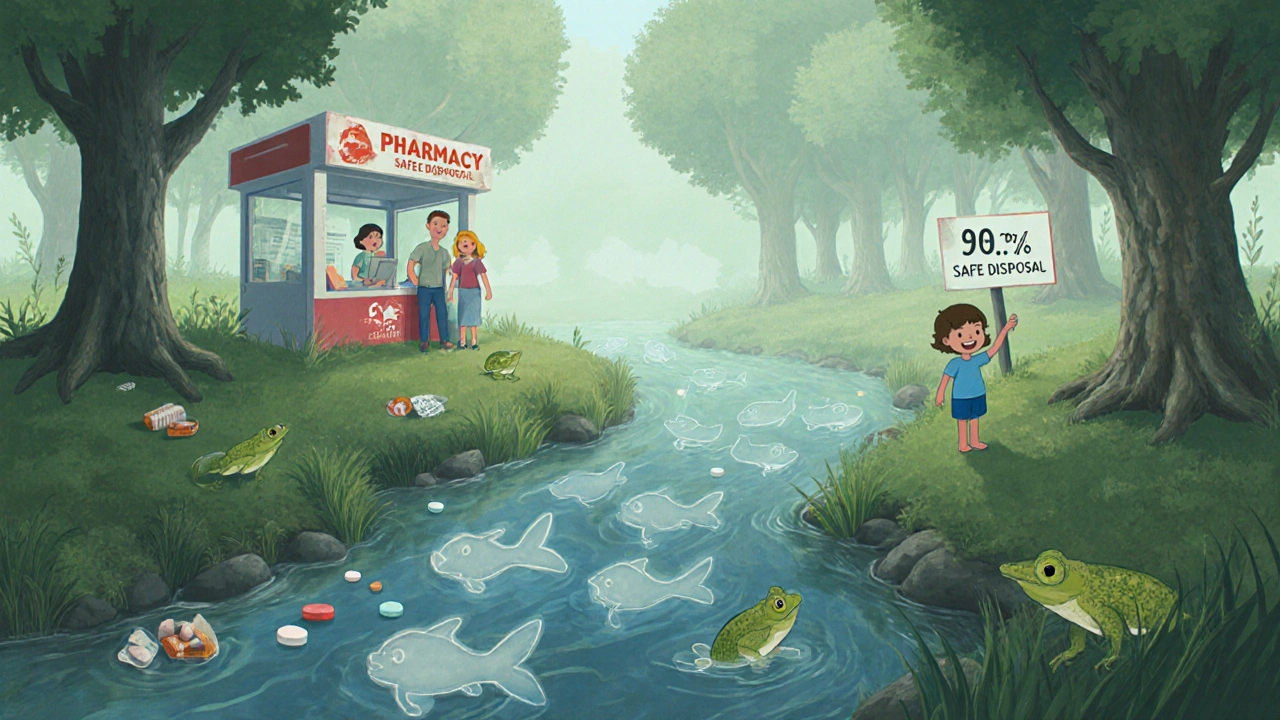
What Experts Say
Dr. Wilson Compton from the National Institute on Drug Abuse says communities with more than three take-back sites per 100,000 people see an 11.2% drop in teen opioid misuse. That’s real impact.
The EPA warns that flushing-even one pill-adds to long-term water contamination. The FDA agrees: take-back is always better. Even for the Flush List drugs.
And here’s something most people don’t know: 42.7% of meds collected in take-back bins in 2023 were opioids or benzodiazepines. That’s not waste. That’s prevention. Those pills were never going to be used. But they could’ve killed someone.
Final Checklist: Are You Disposing Safely?
Before you toss, flush, or recycle, run through this:
- Is my medication on the FDA Flush List? → If yes, and no take-back nearby → flush.
- Is there a take-back location within 30 minutes? → If yes → drop it off.
- Can I get a mail-back envelope? → If yes → use it.
- Am I disposing at home? → Then: remove labels, mix with coffee grounds, seal tight, trash it.
- Is it a liquid, cream, or inhaler? → Then: absorb it first. Don’t pour or spray.
- Is it a needle or syringe? → Then: use a sharps container. Don’t throw loose.
If you’re unsure, call your pharmacist. They’re trained to help. And they won’t judge you for having old meds.
Frequently Asked Questions
Can I flush any expired medication if I don’t have a take-back option?
No. Only 13 specific medications are on the FDA’s Flush List-mostly high-risk opioids like fentanyl, oxycodone, and hydrocodone. Flushing any other drug is unsafe and violates EPA rules. If you can’t reach a take-back site, use a mail-back envelope or dispose at home using the mixing method.
What if I find old pills in my parent’s cabinet and they’re gone?
Take them to a pharmacy drop-off box or use a mail-back envelope. Don’t wait. Expired or unused meds are a risk to anyone who finds them-especially children or teens. Even if the person is gone, the pills are still dangerous. Dispose of them properly as soon as possible.
Do I need to remove pills from blister packs before disposal?
No. You can leave pills in their original blister packs. Just make sure to remove or destroy any personal information on the packaging. Then mix the entire blister pack with coffee grounds or cat litter in a sealed bag. The packaging won’t interfere with safe disposal.
Can I donate unused medications?
In most cases, no. Federal law prohibits donating prescription medications due to safety and regulatory concerns. Some states have limited programs for certain non-controlled drugs, but they’re rare. The safest and most reliable option is always take-back or mail-back disposal.
Are take-back programs really effective?
Yes. DEA data shows take-back programs achieve a 99.8% proper disposal rate. In 2024, over a million pounds of medication were collected nationwide. These programs prevent overdoses, reduce environmental contamination, and stop pills from falling into the wrong hands. They’re the gold standard for safe disposal.
Next Steps
Don’t wait for your next pharmacy visit. Check your medicine cabinet today. Gather expired, unused, or unneeded medications. Look up the nearest take-back location. If none are close, order a mail-back envelope. If you’re stuck with home disposal, follow the 5-step method exactly.
One bottle of old pills might seem harmless. But when multiplied by millions of households, it becomes a crisis. You don’t need to be an expert to make a difference. Just follow the rules. Your family, your community, and the environment will thank you.
